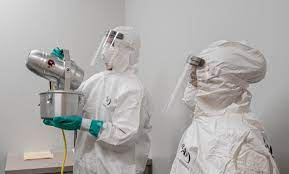Cleaning Process: Techniques and Strategies of Biohazard Cleaning Professionals
Biohazard cleaning professionals employ a range of specialized techniques and strategies to ensure thorough cleanup and decontamination of hazardous materials. The cleaning process with scene cleaning specialists begins with a comprehensive assessment of the contaminated area. Biohazard cleaning professionals carefully evaluate the extent of the contamination, identifying areas that require immediate attention. This initial step is crucial for developing a tailored cleanup plan that addresses the unique challenges posed by each situation.
Personal protective equipment (PPE) is a cornerstone of biohazard cleanup, and professionals meticulously suit up before entering contaminated areas. This protective gear includes gloves, masks, goggles, and full-body suits, forming a barrier between the professional and the hazardous materials. The correct application and disposal of PPE are emphasized during training to minimize the risk of exposure.

Once properly equipped, biohazard cleaning professionals initiate the decontamination process. This involves the use of specialized cleaning agents and disinfectants with proven efficacy against a wide range of biohazards. Professionals apply these agents following strict protocols, ensuring that all surfaces are thoroughly cleaned and sanitized.
Advanced cleaning techniques, such as fogging and ozone treatment, are employed to reach inaccessible areas and eliminate lingering contaminants. Fogging disperses a fine mist of disinfectant, effectively covering surfaces and penetrating porous materials. Ozone treatment involves the use of ozone gas, a powerful oxidizing agent, to neutralize odors and destroy pathogens.
The disposal of biohazardous waste is a critical aspect of the cleanup process. Professionals adhere to strict regulations governing the proper disposal of contaminated materials. This includes the use of specially designated containers and coordination with waste disposal services to ensure the safe and legal disposal of biohazardous waste.
Documentation is a key component of the cleanup process, and biohazard cleaning professionals maintain detailed records of their work. This documentation includes information about the extent of the contamination, the cleaning methods employed, and the disposal of biohazardous waste. These records not only serve as a reference for future actions but also contribute to transparency and accountability in the cleanup process.
In conclusion, the cleaning process undertaken by biohazard cleaning professionals is a meticulous and systematic approach to ensure the effective removal of hazardous materials. From the initial assessment to the final disposal of biohazardous waste, these professionals employ a combination of technical expertise, advanced techniques, and strict adherence to safety protocols.
